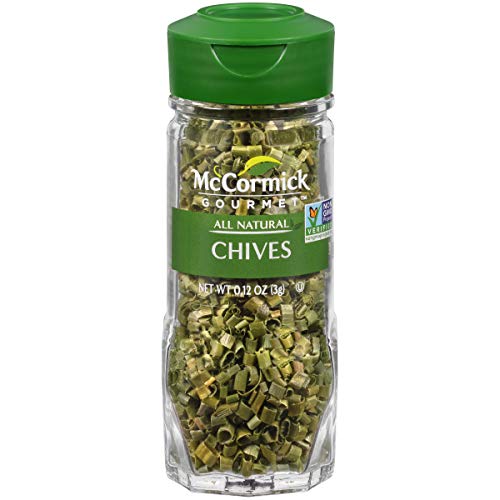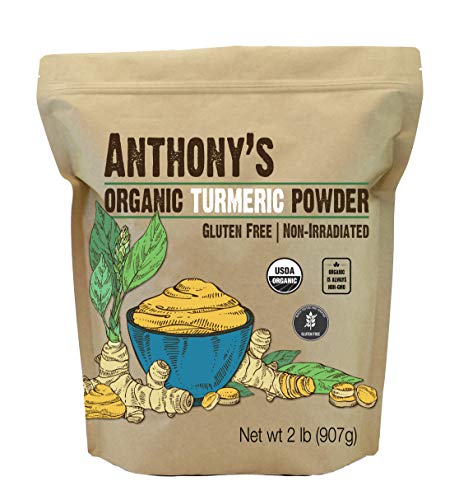If you go on any social media platform, you’ll likely find lots of content surrounding the mysterious, exclusionary diagnosis of “IBS” or Irritable Bowel Syndrome.
In general, those who are affected by it are frustrated, angry, or resigned because they don’t know what else can be done about their symptoms. Typically, they’ve been to their conventional medical providers and have had multiple tests ordered and completed – blood tests, X-rays, CT scans, ultrasounds, or even more invasive procedures like endoscopies – yet are told their test results are “normal” or show no signs of “disease.”
Sometimes, they are told that their experiences are “all in their head” and placed on mental health medications. Then, they turn to social media in the hopes that they can get just a little bit of relief from the pain and other symptoms that are disrupting their lives. The latest topic of interest surrounding IBS seems to be visceral hypersensitivity (VH).
Before we dive deep into the relationship between Irritable Bowel Syndrome (IBS) and pain, specifically VH, it’s important to understand a little bit of the background on what is actually known about IBS from the literature and why it’s important.
Functional gastrointestinal disorders (FGID) are common worldwide, and IBS is a type of FGID.
Functional disorders refer to medical changes to the functioning of a body system (abnormality), rather than body structure. These disorders affect more women than men and it is estimated that approximately 40% of people with IBS are affected with these disorders globally, and about 25 million Americans are diagnosed with one or more FGID. People affected by FGID typically experience chronic, recurring gastrointestinal (GI) issues like diarrhea, constipation, bloating, abdominal pain, vomiting, or indigestion (dyspepsia).
In fact, FGID is often associated with other chronic functional disorders: chronic pain syndromes like fibromyalgia, psychological diagnoses like depression or anxiety, or chronic fatigue syndrome. This doesn’t mean that everyone with a functional disorder has VH, but there is quite a bit of overlap.
You first need a basic understanding of pain and its complexities. Pain is subjective and often difficult for patients to describe. There are many ways to classify pain and to keep it simple, here are key concepts:
1- By Duration - acute (short term, < 3 months) or chronic (> 3 months)
2- By Causes - nociceptive (caused by external damage to body tissue) or neuropathic (caused by damage to the actual nervous system (brain and spinal cord structures) itself)
3- By Location of Origin - somatic or visceral – both of which are types of nociceptive pains
- Somatic pain usually involves tissues like skin, joints, or muscles
- Visceral pain begins in the internal organs of the thoracic and abdominal cavities. This includes your heart, lungs, stomach, intestines, gallbladder, pancreas, liver, bladder, reproductive organs, etc.
Cambridge Dictionary defines hypersensitivity as “a condition in which the immune system reacts in an extreme way.” In other words, it’s an increased sensation to stimuli. So when you hear the words “visceral hypersensitivity,” think of it as complex pain or discomfort that is arising from somewhere in the gut because of some stimuli.
What does it feel like to have VH?
Those with VH feel uncomfortable with the sensations coming from the organs of the digestive system. To work properly, normal pressure is exerted in the GI tract as fluids, gas, and digested food particles move downward, and this pressure on the internal organs causes pain in VH. This pain is often described as non-specific or diffuse, meaning it’s hard to identify the exact place the pain arises, which can sometimes confuse the brain, too! Sometimes, the pain radiates to other places, which can make pinpointing the exact location difficult for providers.
Have you ever had your practitioner apply small amounts of pressure onto your abdominal cavity? When we do this, we are testing your visceral pain threshold. If you feel some discomfort with the exerted pressure, chances are you have VH. Those with normal organ functioning would not experience any unpleasant sensations.
The perception of pain by the individual is a key factor in why IBS patients experience so much frustration from their providers! The internal pain signaling pathways are complex and challenging, which is why there is no “good” way to diagnose it, but it makes the threshold for pain in those visceral organs lower than what you’d normally expect.
Now that we know what visceral pain is, what is causing it??
This is something that’s still being investigated. There have been multiple studies and the latest research seems to relate VH to stress! Stress can be a trigger for pain; stress also influences the gut microbiome (organisms that live within the gut) and immune responses.
The communication between the gut and brain has been well-documented. There is signaling between the brain’s nervous system and the enteric (gut) nervous system, which is why you may sometimes hear that your gut is your second brain. The gut has nerve cells throughout and these are activated by different types of signals, including inflammation, stretch or distension, food, etc. When the nerves become excited or perceive a threat or stress repeatedly, they communicate this through the nerve endings, which either slow or speed up the digestive process. If overstimulation and excitement occur too frequently, pain or illness can result.
- The Gut Microbiome - Some of the evidence shows that patients with IBS have different microbial friends inhabiting their gut. This can lead to dysbiosis, where instead of everyone “playing” nicely together, some of the species become “bullies” and take over.
- Genetics - Some people are more prone to hypersensitive pain responses due to their genes.
- Enhanced Intestinal Permeability (Leaky Gut) - The intestines are lined with a mucosal barrier. Degradation of this protective barrier from continuous toxins, stress, and heavily processed foods can cause inflammation, which allows holes to form. When this occurs, the microbial byproducts and inflammatory agents penetrate the bloodstream, induce nerve activation, and eventually signal the release of stress hormones.
- Stress - In IBS, stress is a critical provocation for VH. When stressed, we activate molecules and hormones that affect GI motility, and eventually, can alter the gut microbiome. Whether psychological or physical (with or without environmental effects), stress is harmful to the gut and body. Chronic stress causes overactivation of the nervous system and can affect the perception of pain.
As you can see, all of these factors are cyclical, resulting in the perception of pain from persistent stimuli.
How can I manage VH in IBS?
The good news is that researchers are still conducting studies. The best way to tackle this is through a holistic multi-modal approach that involves both traditional and alternative approaches. While there is no “cure” at this moment, there are things that can improve the quality of life and symptoms of VH and IBS.
Diet is a huge component. The standard American diet is linked to the development of FGID, so eating a Low FODMAP diet can help decrease gut dysbiosis since it reduced certain carbohydrates that are difficult for some people to digest. This diet may reduce some of the burdensome gut symptoms. It is also important to focus on eating hygiene, which includes how to eat.
Adequate sleep and exercise can improve GI symptoms. Sleep hygiene and sleep routines can help put the body in the rest and digest mode it needs. Exercise for 30 minutes at least three times per week, can help mood, improve sleep quality, and decrease stress.
Probiotics may help with the altered microbiome and improve symptoms. While there are various strains, these are generally regarded as safe.
As you may be aware, many with VH and IBS are placed on pharmacological agents like antidepressants. Although many people assume that the prescribing of these agents is for their mood disorder, the reality is that the gut-brain axis makes a great case for these! If your pain thresholds are enhanced by psychological factors, antidepressants and other nerve pain medications (non-opioid chronic pain medications) target these pathways to either numb the pain signals or raise the pain threshold. Since many of these affect transit time in the digestive tract, it is important to review the GI side effects before taking them.
The mind is very powerful. Reprogramming new neural (brain) pathways has helped many people with their pain and other conditions. Therapies like acupuncture, biofeedback, hypnosis, cognitive and behavioral therapies, and/or psychotherapy have all shown promising results.
My best advice for communicating with your provider is to go in with an open mind, bring a family or friend with you to the appointment to have another set of ears, take notes, and respectfully advocate for your own health. For a few months before your appointment, start keeping a diary of your symptoms and foods. Notice if there are relationships. This can help your practitioner determine how to best manage your symptoms.
- American College of Gastroenterology. (n.d.). Low-FODMAP Diet.
- Axelrod, C. H. & Saps, M. (2020). Global Dietary Patterns and Functional Gastrointestinal Disorders. Children, 7(10), 152.
- Cambridge University Press. (n.d.). Hypersensitivity. In Cambridge Dictionary. Retrieved March 20, 2023.
- Fikree, A. & Byrne, P. (2021). Management of functional gastrointestinal disorders. Clinical Medicine, 21(1), 44–52.
- Ingraham, P. (2023, January 23). The 3 basic types of pain: nociceptive, neuropathic, and “other” (and then some more). PainScience.com. Retrieved March 24, 2023.
- James, S. (2013). Human pain and genetics: some basics. British Journal of Pain, 7(4), 171–178.
- Petersen, M. W., Schröder, A., Jørgensen, T., Ørnbøl, E., Meinertz Dantoft, T., Eliasen, M., Benros, M. E., & Fink, P. (2020). Irritable bowel, chronic widespread pain, chronic fatigue and related syndromes are prevalent and highly overlapping in the general population:DanFunD. Scientific Reports, 10(1), 3273.
- Pusceddu, M. M. & Gareau, M. G. (2018). Visceral pain: gut microbiota, a new hope?. Journal of Biomedical Science 25, 73.
- van Thiel, I. A. M., de Jonge, W. J., Chui, I. M., & van den Wijngaard. (2020). Microbiota-neuroimmune cross talk in stress-induced visceral hypersensitivity of the bowel. American Journal of Physiology- Gastrointestinal and Liver Physiology, 318(6), G989-G1087.






















Comments
Join The Conversation...